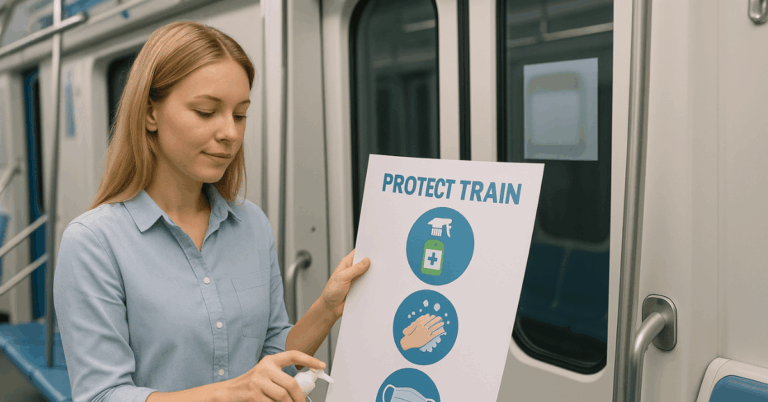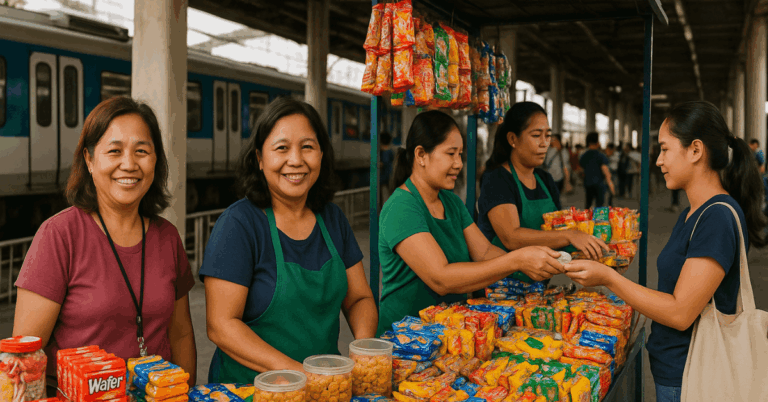Community-run book corners at stations are transforming how travelers use their waiting time.
These volunteer-managed reading spaces offer free books that promote literacy and encourage community interaction.
They strengthen social bonds and build trust among commuters through shared responsibility. This article explains their operation, benefits, challenges, and impact on local culture.

Understanding Community-Run Book Corners
These corners are simple yet powerful spaces for public connection. They stand as symbols of cooperation, literacy, and shared culture among travelers.
What Are Community-Run Book Corners?
A community-run book corner is an informal library located in transport stations. These are managed by volunteers and rely on trust rather than registration systems.
Commuters can take, read, and return books freely. Many book corners are built from small shelves or boxes placed strategically in waiting areas.
The idea promotes equal access to reading for everyone, especially those who cannot afford to buy new books.
How They Started?
The concept traces back to the global Little Free Library movement, which encouraged neighborhood book sharing.
Over time, similar initiatives appeared in train and bus stations worldwide. Japan, Germany, and the Philippines have successfully adopted this model.
These initiatives remind people that reading can happen anywhere, even while traveling.
The Goals and Philosophy Behind Them
Book corners serve a deeper purpose than offering free books. They promote the idea of shared responsibility and lifelong learning.
Encouraging Literacy and Lifelong Learning
Book corners make reading accessible to everyone, regardless of age or income. They turn ordinary waiting times into learning opportunities.
Children and adults alike benefit from exposure to new ideas through donated books.
These spaces encourage curiosity and self-education. Communities that adopt them often notice increased participation in reading programs.
Building Trust and Responsibility
Community-run book corners operate on an honor system. Readers borrow and return books voluntarily without staff supervision.
This system strengthens moral responsibility and social trust. People learn to value honesty and respect for shared property.
Such spaces inspire cooperation and mutual care within local neighborhoods. The simplicity of this system makes it sustainable in the long term.
How Community Members Manage the Book Corners?
These projects rely heavily on community effort. Volunteers and local partners ensure that the book corners remain organized and welcoming.
Daily Operations and Maintenance
Volunteers regularly clean and arrange the books to maintain order. They inspect for damaged or outdated materials and replace them with new donations.
Some communities assign rotation schedules for upkeep. Local station managers may assist by offering space and infrastructure.
Clear labeling and maintenance schedules keep the shelves functional and attractive for readers.
Sources of Book Donations
Book donations come from multiple sources. Residents, schools, and publishing houses contribute both used and new materials. Annual book drives or reading events help sustain the collection.
Communities often organize donation days to encourage participation. The diversity of donated materials enriches the reading options available to travelers.
Involvement of Local Authorities and Partners
Local governments, NGOs, and civic groups often help in promoting these corners. Partnerships with transport authorities ensure visibility and proper maintenance.
Some private sponsors fund furniture, signs, or reading benches. This cooperation between public and private entities sustains long-term growth. These efforts showcase how reading can unite both sectors in social initiatives.
Types of Book Corners at Stations
Book corners differ depending on available space and resources. Each design reflects the creativity and needs of the community.
Common Models
Several types of book corners are found in public stations.
- Self-Serve Boxes: Small enclosed cabinets that protect books from damage.
- Reading Corners: Larger spaces equipped with chairs and tables for comfort.
- Pop-up Libraries: Temporary setups during festivals or literacy campaigns.
Each design suits a particular environment, from busy city terminals to rural stops. Regardless of size, they all share the same purpose—to make reading accessible.
Digital and Hybrid Models
Modern communities are combining technology with traditional reading. Some stations now provide QR codes linking to e-books.
Travelers can scan and read on their smartphones during commutes. Hybrid systems allow people to recommend or reserve books online. These innovations keep book corners relevant in a digital world.
Popular Genres and Local Preferences
Book corners reflect local tastes and social culture. The variety of titles available makes them inclusive for different readers.
Common Selections
Commuters often prefer light and short reading materials. Popular genres include travel guides, short stories, self-help, and local magazines.
Children’s books and local authors are also featured. By showcasing regional literature, communities support local writers. These corners create cultural awareness through shared reading experiences.
How Communities Curate Content?
Volunteers often rotate book selections every few months. Feedback from readers helps decide which genres to include. Schools and writers’ groups collaborate to introduce educational titles.
Such curation ensures that the book collection remains engaging and updated. It also encourages community interaction through shared recommendations.
Benefits for Commuters and Local Communities
Book corners offer more than entertainment. They strengthen mental health, social ties, and civic responsibility.
Promoting Relaxation and Focus
Reading provides a calm and productive way to spend waiting time. It helps travelers de-stress and improve focus during daily commutes.
The presence of books also adds a peaceful atmosphere to public spaces. Passengers become less dependent on mobile distractions. These corners create a balanced environment for relaxation and learning.
Creating a Sense of Belonging
Book corners promote interaction among strangers. Commuters often share or discuss books, building informal connections. These exchanges develop community spirit in otherwise impersonal places.
People begin to view stations not just as transit points but as shared spaces. This sense of belonging encourages collective care for the facility.
Strengthening Local Identity
Every community-run book corner reflects local culture. They showcase native literature, folklore, and educational themes.
Travelers get to know the spirit of the area through its books. These small initiatives express civic pride and cultural continuity. They also serve as visible reminders that reading remains a shared value.
Challenges and Solutions
Every community project faces limitations. However, book corners thrive because communities find creative solutions.
Common Issues
Volunteers often face challenges such as book theft or poor maintenance. Limited funds can restrict restocking and infrastructure upgrades.
Some corners lack proper storage or weather protection. A shortage of volunteers can lead to inconsistent organization. Despite these, communities remain committed to keeping them functional.
Community Solutions
To reduce problems, communities launch awareness campaigns about respect and sharing. Books may be labeled with a simple “Please return” reminder.
Some stations set up small monitoring groups or donation logs. Organizing monthly “clean and restock” events keeps participation active. Through collaboration and goodwill, most issues are quickly resolved.
How to Start a Book Corner in Your Station?
Many communities begin small and grow steadily. Starting a station book corner requires planning and cooperation.
Steps to Begin
Creating a book corner follows simple, actionable steps.
- Get approval from station administrators or transport officials.
- Gather volunteers from nearby schools or civic groups.
- Collect book donations through local drives or online campaigns.
- Build or repurpose shelves to display books neatly.
- Promote participation through posters or local social media.
A clear plan ensures that the book corner runs smoothly and gains community trust.
Tips for Sustainability
Keeping a community-run book corner successful requires long-term care and active participation.
These tips help maintain order, attract readers, and ensure lasting community support.
- Organize book swap weekends to encourage new donations and public engagement.
- Maintain transparent donation records for accountability and trust.
- Partner with schools and local clubs to ensure steady volunteer help.
- Encourage readers to leave short notes or reviews inside books for others.
- Host reading or storytelling events to strengthen public interest.
- Regularly refresh and rotate the book collection to keep it appealing.
Future of Community-Run Book Corners
Book corners continue to evolve as society changes. They adapt to new technologies while preserving human connection.
Expansion and Integration
Cities are expanding book corners across transport networks. Hybrid systems combining physical and digital materials are on the rise.
QR codes now provide access to free e-books on smartphones. This hybrid approach widens accessibility to reading materials. Integration with local libraries is also being explored for the future.
Youth Engagement and Education
Schools play a key role in keeping these corners active. Teachers encourage students to volunteer and donate books.
Youth reading clubs may adopt book corners as part of community service. These programs teach civic values and literacy together.
Engaging young people ensures continuity and enthusiasm in the project’s mission.
Conclusion – Building a Culture of Shared Reading
Community-run book corners at stations prove that small actions can spark big change. They turn ordinary places into spaces of trust, knowledge, and togetherness.
Through volunteer work and shared passion, communities strengthen their cultural identity.
Every book borrowed or shared brings people closer, reminding everyone that learning never stops, even while waiting for the next train.












